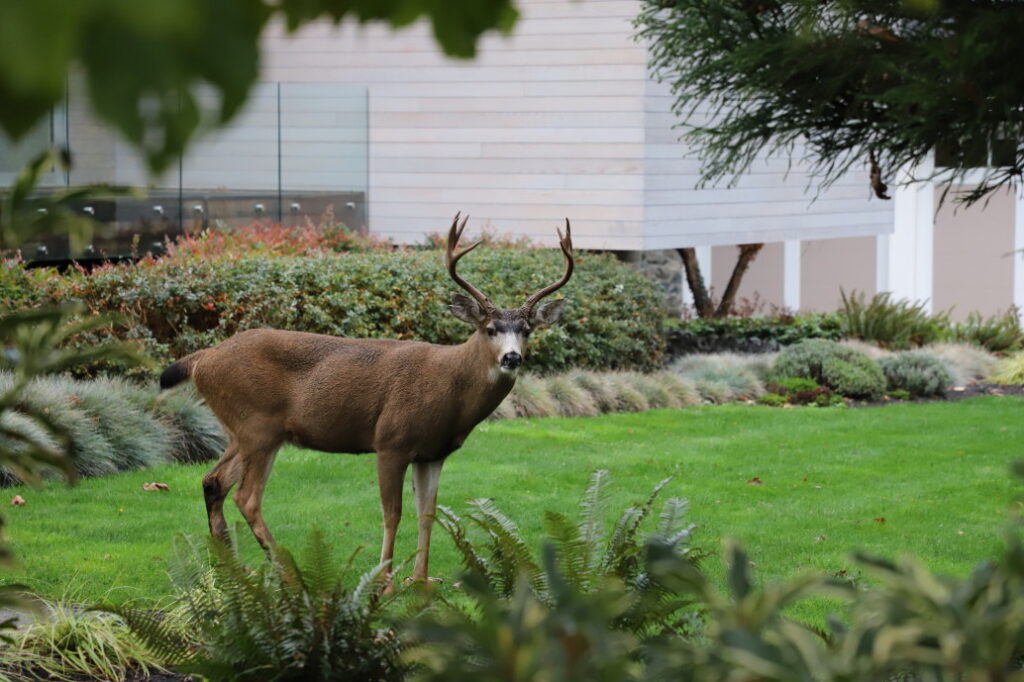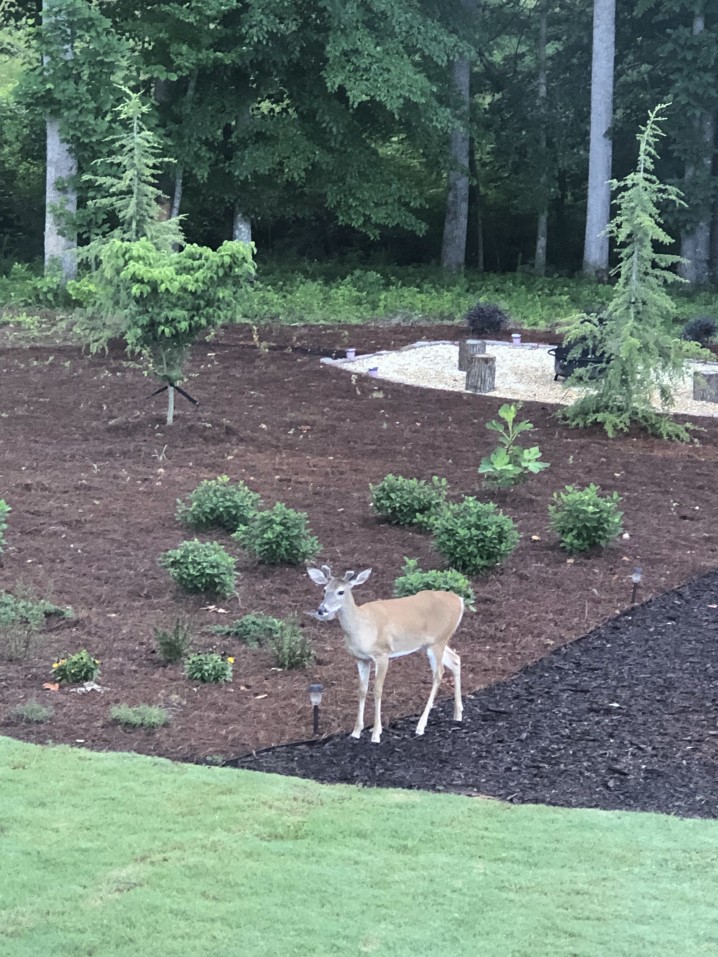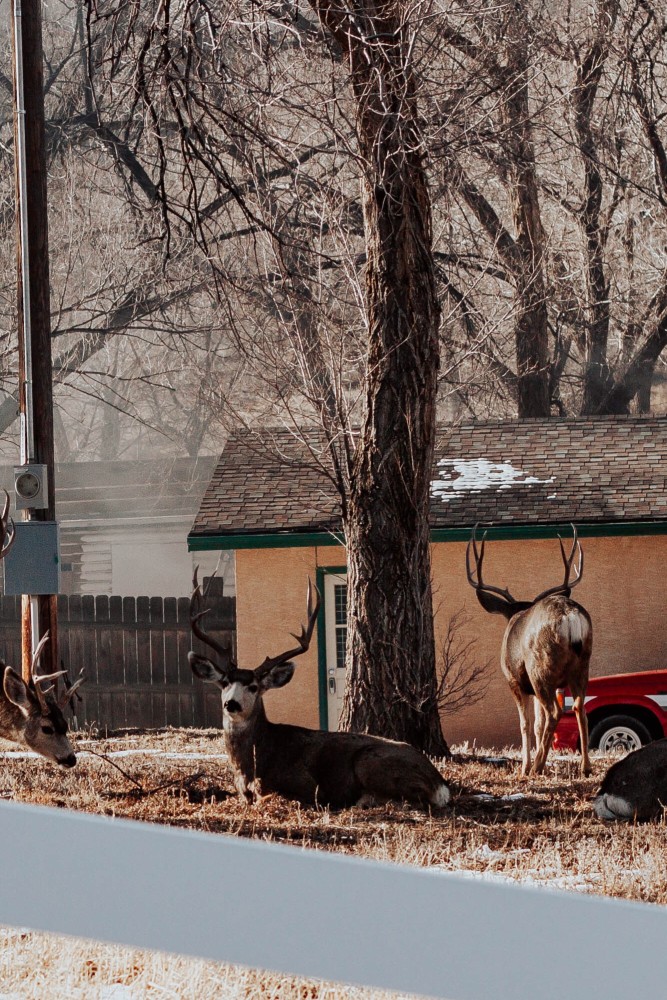
February 20, 2022
Are Deer A Nuisance To Your Yard?
Homeowners and gardeners find deer a challenge and see them as a problem when this wildlife invades their property. With less and less of their natural habitat of dense forests, they are forced to look for meals in city yards.
These beautiful creatures are often considered nuisance and destructive animals. This is because they feed on landscape plants and trees, and crops in gardens, which causes a lot of damage, especially if there is a family of deer that found itself in the yard. During the winter months, cold temperatures and deep snow make deer look for food in various places, such as your yard. Also, since deer are animals of habit, they can often return to the same territory. Thus, you should be worried if you see deer in your yard.
In addition, even though deer are usually not aggressive when not provoked or frightened, they can still attack humans when they sense that they or their babies are in danger.
But deer can pose a threat in a different way as they spread disease. There is an indirect risk of attracting deer ticks to your yard, if you happen to see deer a lot. As a result, people can catch Lyme disease from deer ticks.
What Attracts Deer To Your Yard?
If you happen to have a pond, swimming pool, or any kind of water source on your property, deer may stop by and drink the water whenever it is available. In winter, they might eat snow as well or rummage in the snow to expose edible grass to eat.
However, the biggest attraction for deer is the food that is available in your yard. Deer can feed on all sorts of vegetation and crops that are commonly found in yards, ranging from lawn grass, hay, ornamental flowers, tree bark, up to vegetables and fruit.
They are herbivorous animals that spend a lot of their time browsing and foraging. To avoid predators, deer are mainly active at night when searching for food. This is when they will do most of the damage to your property.
You’ll often find deer grazing on grasses, especially if you live in a suburban area. They will eat grass, however, it is not their favorite or nutritionally essential food. They prefer to consume grass that is green, young, and succulent. Many gardeners agree that deer seem to show a preference for plants that have been fertilized. Deer are also known to dig up a lawn in search of grubs, which they like to eat in the fall.
Deer consume mainly weeds, broadleaf plants, leaves, twigs, tips of trees and woody shrubs, and shoots of woody plants or vines. Also, if you have flowers and flowering plants growing in your garden, these will definitely attract deer. They prefer daylilies, English ivy, brambles, fireweed, American mountain ash, dandelion, sweet lupin, hostas, campion, redleg, chicory, hoary cinquefoil, red clover, ribwort plantain, yarrow, and occasionally the thorny canes of rose bushes. Deer will devour on the buds, blooms, and foliage.

Fruits that are appealing to these animals and satisfy their appetites include apples, strawberries, blackberries, blueberries, and persimmons.
When food is scarce, deer will also not despise many vegetables and will eat just about anything like hot peppers or prickly-stemmed okra. The vegetables that deer choose to consume include certain high-protein crops such as beans, peas, cabbage, broccoli, kale, lettuce, turnips, cauliflower, soybeans, alfalfa, sorghum, corn, and Brussels sprouts. Carrots are among their favorite vegetables, deer will enjoy digging up the carrots and eating them.
Deer are especially fond of the narrow-leaf evergreens, especially fir and arborvitae trees. They love the tender tips of young trees. Also, they like the nutritious nuts that come from pecans, chestnuts, hickory, acorns and beechnut acorns.
Finally, deer cause damage not only through consuming the various plants and crops. Deer will stomp all over the garden and lawn, kick around plants, and compact the soil.
What Damage Do Deer Cause To Trees?
Deer will eat the bark of young trees, as well as any buds, twigs, and acorns they can reach. On many occasions, they also eat the bark off of certain species of trees for nourishment.
Serious damage will be done to established trees when deer browse the buds. The animals nip the tree at the base, creating multiple stemmed trees and causing reduced growth rates.
Besides eating certain parts of the smaller trees and shrubs, the bucks (male deer) can also do serious damage to them by rubbing their antlers up against the trunk and stem of the tree. But this activity happens late at night, mostly from early fall to late winter during the breeding season or rut. The bucks rub against the tree to smooth out their growing antlers, scraping the bark off. This will destroy or even completely kill the trees, especially the young and thin-barked species as well as the newly planted seedlings.

How To Keep Deer Away From Eating Plants And Trees In Your Yard?
As deer can be a real nuisance for gardeners and homeowners, it’s important to keep this wildlife off your property in the first place.
The most effective way to protect trees and garden vegetation from deer is fencing. If there are many trees in your orchard, enclose the whole area using woven-wire fencing. However, to properly deer proof the area, the fence must be a minimum of 6, or even 8 feet high. It also needs to be at an angle of around 30 degrees.
Other methods to keep deer away include mesh netting, choosing deer repellent plants, flowers, and shrubs, as well as using chemical deterrents and scare devices.
If you’re having constant problems with deer and need wildlife removal and control, it’s important to get in touch with a professional as removing deer can be very challenging. Westchester Wildlife company provides humane live and dead deer removal services in Fairfield County CT, or Westchester, Putnam, and Dutchess Counties NY. Call us today for a free phone consultation or appointment.
